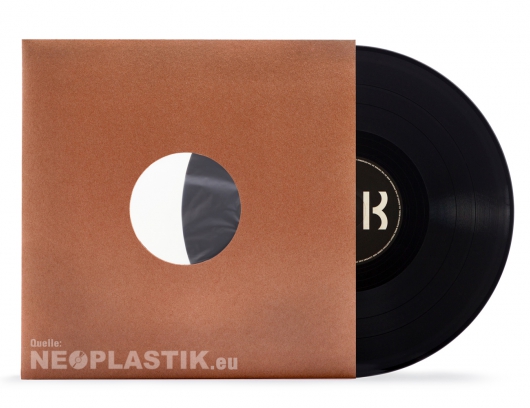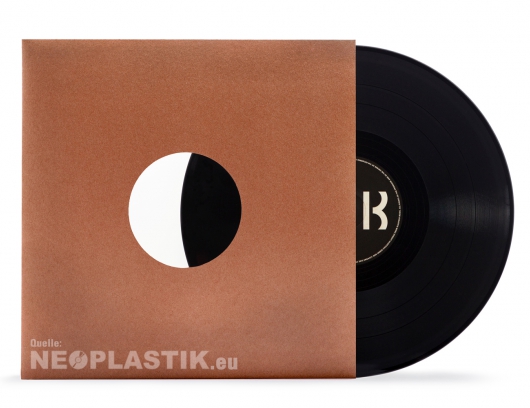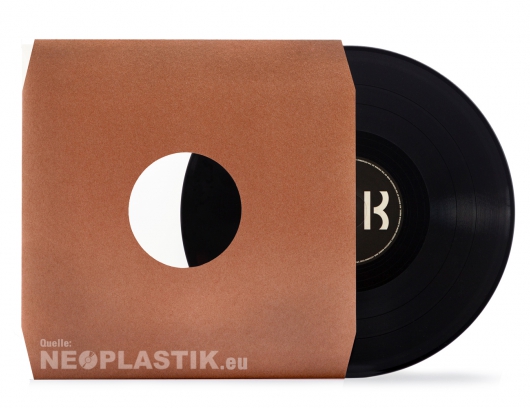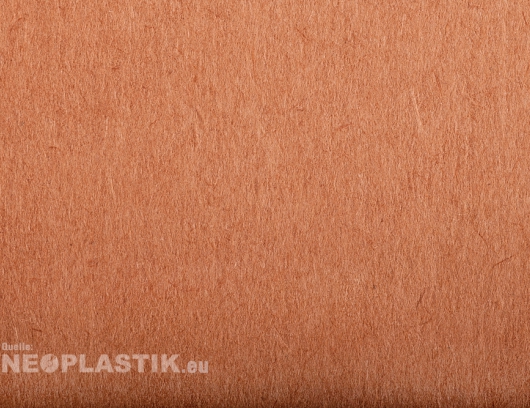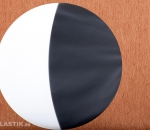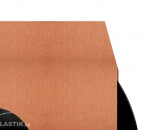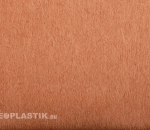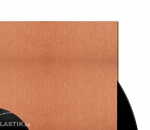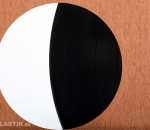LINING OR NO LINING?
All inner sleeves of Neoplastik can be supplied with a polyethylene film lining. The film has antistatic properties and contains no additives such as softeners or similar products that could react with the vinyl of the records. Lined sleeves are much smoother on the inside than unlined paper sleeves, a difference you are sure to notice immediately when removing and inserting your records.
To the video
bevelled corners
When using tight vinyl covers it can sometimes be a little tricky to insert the record together with the protective paper sleeve. To make this process easier we can give the corners of the paper sleeve an angled cut. This allows the air to better escape from the cover and the record to glide into the sleeve more easily. However, this creates two openings at the bottom of the inner sleeve, which allow the air to escape more easily, but also dust to enter the sleeve.
To the video
THE PAPER
At Neoplastik, the sleeves are made from different types of paper. Kraft paper is characterized by a particularly high strength, and the haptics are very pleasant. It consists almost 100% of pulp fibers. The wooden look gives the product that certain something.
To the video
LONGER REAR LIP
To facilitate the removal and insertion of the vinyl record into the protective paper sleeve, customers can opt to have the rear of the opening lengthened a little at no extra cost. The resulting overlapping paper lip makes it even easier to handle the records.Inner sleeves without a lengthened lip are made from a paper web measuring 610 mm in length, and both the rear and front part are thus 305 mm long.Inner sleeves with a lengthened rear lip are made of a paper web measuring 605 mm in length and folded so that the rear is 304 mm long and the front is 301 mm long. To be precise, the paper on the front part is shortened. The inner sleeve with a lengthened rear lip is our standard variant.
To the video
CENTRAL HOLE
By default, our inner sleeves are manufactured with the iconic holes and, in the lined variant, a continuous inner film to prevent dust and dirt from entering through the large opening. This protects the vinyl record and makes it easy to read the label. It is also possible to cut only one or even no central hole into the sleeve. When using unlined inner sleeves we recommend offsetting the holes by about one millimetre, so that the record has a guide when sliding into the inner sleeve.

